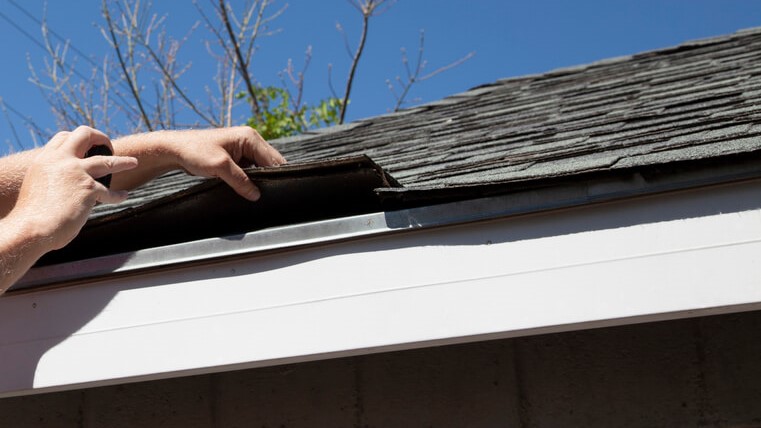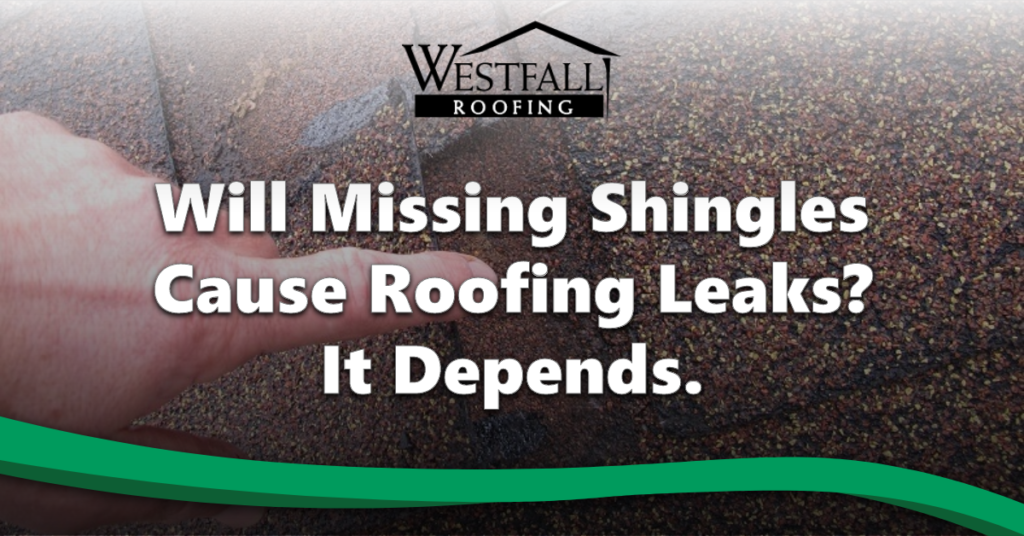A leaking roof can escalate from a minor inconvenience to a major problem quickly. Roof leaks can cause water damage both inside and outside your home, with short-term effects like stains and ruined drywall, as well as longer-lasting effects like mold, insect infestations, and even structural damage to your home. The faster you spot a leak in your roof, the better.
It’s important to have your roof repaired correctly by a professional contractor to prevent continued or recurring damage from leaks. However, until a contractor can arrive to assess and repair your damaged roof, you can take these steps to locate the source of the leak and mitigate destruction.
1. Check Inside for Signs of Water Damage
Many homeowners first notice signs of a roof leak from inside the house. Of course, the most obvious sign would be water dripping from the ceiling when it rains. However, sometimes a leaking roof presents more gradual signs.
If you notice water stains on the ceilings or walls, it’s time for some detective work. Take note of their size and how fast they spread. You might try outlining them with a pencil or snapping photos with your phone so you can keep track. The smell of mold or mildew also serves as a clue to the presence of water.
2. Inspect Your Home’s Exterior for Signs of a Roof Leak
You also might notice signs of a roof leak from outside the house. You could see sagging or discolored soffits and fascia. If you go onto your roof—safely, always—you may notice portions of the roof feel soft or spongy under your weight.
Weather events tend to precede roof leaks, so look over your room especially following a hurricane or major storm. While rare in Central Florida, if the temperatures dip low enough, you could occasionally experience ice dams. If your roof leaks immediately following a freeze, ice dams may be the culprit.
3. Locate and Document the Source of the Leak
Once you discover your roof is leaking by checking inside and outside your home, the next step is to locate the source of the water intrusion. Before heading onto the roof itself, or if you feel unsafe doing so, check easy-to-access points inside the house. Examine your attic, crawl spaces, or utility closet. Use a bright light to seek out puddles, soft spots, mold, or other signs that lead to the source.
If you do choose to go onto the roof, start by looking “uphill” from the spots where you see dripping water or stains inside. Check especially around chimneys, dormers, and roof vents. Look for a missing shingle or any gaps along seams. Take note of any spots that feel soft underfoot. Then, once you narrow down the problem area, you can start to gently remove a shingle or two to look for evidence. You may spot discolored felt or wood, as well as mold.
If you’re unsure, it’s always a good idea to call a professional to locate and confirm the source of a leaking roof.
4. Stop the Leak to Temporarily Until Help Arrives
It may take time before a contractor can make it to your home to fix a leaky roof, especially following storms or other busy times for roofing work. In that case, take steps to protect your home from water damage as much as possible in the interim.
If possible, clear away moisture as it accumulates so it doesn’t add to the damage. For holes in the roof, clear away surrounding debris, then use screws to secure a tarp as a temporary patch. For damaged seams around vents or soffits, caulk can provide a short-term fix. Ultimately, however, if vents or boots are damaged, they will need to be replaced.
Meanwhile, inside the house, place buckets to catch drips and remove rugs and furniture from the immediate area. Use a fan or dehumidifier to reduce moisture and the risk of mold.
Even if you have plans to replace your roof soon, you should not ignore a leak. The damage from roof leaks can become substantial in a short-term and ultimately make your future roof replacement costlier.
5. Call a Roofing Contractor to Fix the Leak
Taking good care of your roof is an important part of home maintenance and protecting your long term investment. But even a small water leak on the roof can damage your home and its contents. If you discover a roof leak, call Westfall Roofing as soon as you can to schedule a repair.





